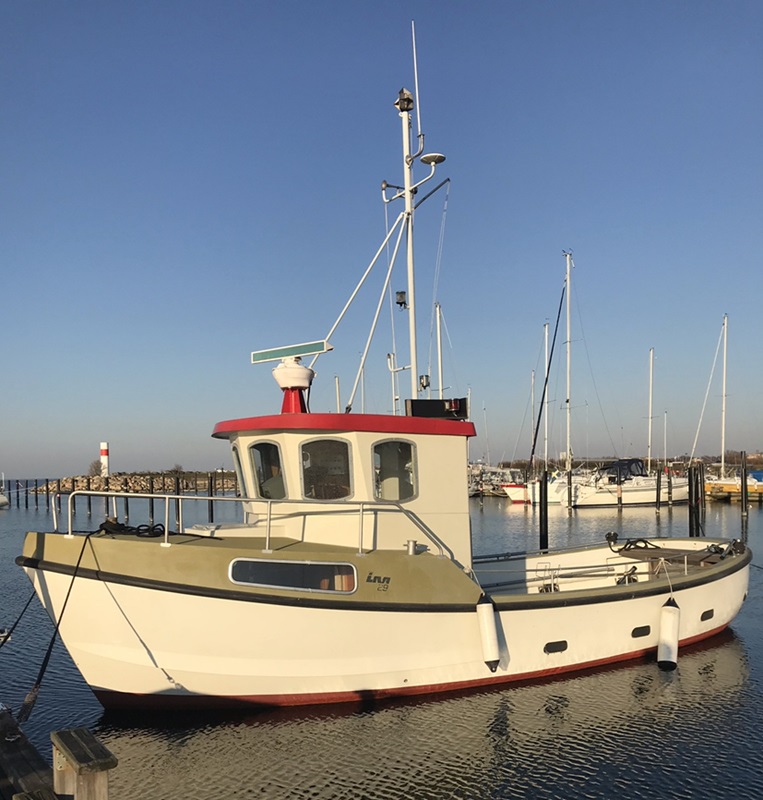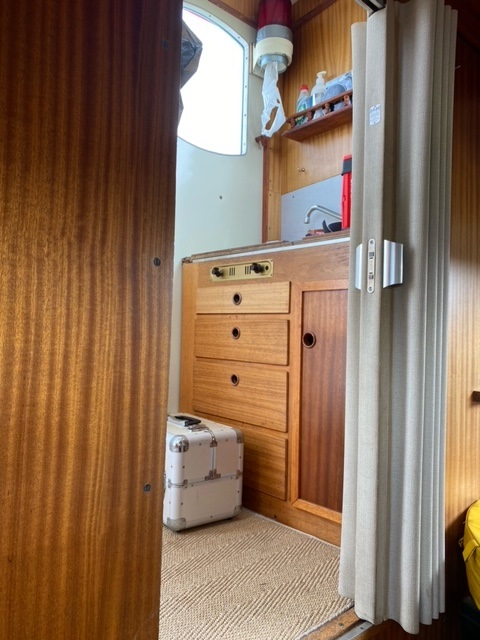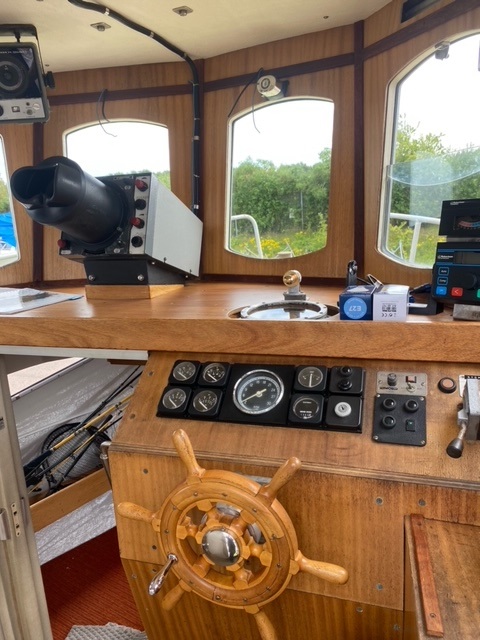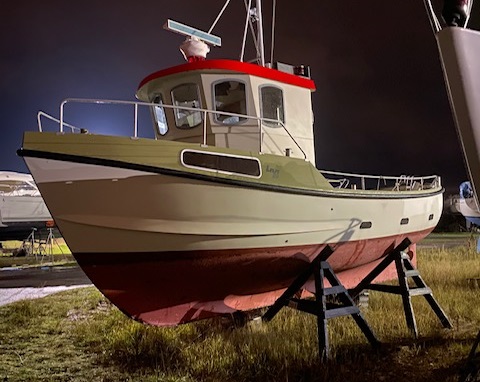Review of LM 29

Basic specs.

Looking for a new boat? Find a LM 29 or similar boat for sale
Both the hull and the deck is made of fibreglass. A hull made of fibreglass requires only a minimum of maintenance during the sailing season.
The hull is a sandwich construction which improves the indoor climate. Especially when the water is colder than the air in the cabin, then the double hull insulates against cold water and reduce the condense water in the cabin.
The boat is equipped with 2 berths, a galley and 70 liters (18 US gallons, 15 imperial gallons) fresh water capacity.



Full keel
The LM 29 is built with a long keel. A long keel provide a better directional stability than a similar boat with a fin keel; on the other hand, better directional stability means also that the boat is more difficult to handle in a harbour with less space.
The boat can enter even shallow marinas as the draft is just about 1.15 - 1.25 meter (3.77 - 4.07 ft) dependent on the load. See immersion rate below.
The fuel tank has a capacity of 70 liters (18 US gallons, 15 imperial gallons).
LM 29 may be equipped with an inboard Ford diesel engine at 80 hp (59 kW).
The transmission is a shaft drive. A shaft drive will in the long run require less maintenance than other types of drive e.g. a sail drive.
Sailing characteristics
This section covers widely used rules of thumb to describe the sailing characteristics. Please note that even though the calculations are correct, the interpretation of the results might not be valid for extreme boats.
What is Theoretical Maximum Hull Speed?
The theoretical maximal speed of a displacement boat of this length is 6.6 knots. The term "Theoretical Maximum Hull Speed" is widely used even though a boat can sail faster. The term shall be interpreted as above the theoretical speed a great additional power is necessary for a small gain in speed.
The immersion rate is defined as the weight required to sink the boat a certain level.
The immersion rate for LM 29 is about 145 kg/cm, alternatively 816 lbs/inch.
Meaning: if you load 145 kg cargo on the boat then it will sink 1 cm.
Alternatively, if you load 816 lbs cargo on the boat it will sink 1 inch.
Sailing statistics
This section is statistical comparison with similar boats of the same category. The basis of the following statistical computations is our unique database with more than 26,000 different boat types and 350,000 data points.
What is L/B (Length Beam Ratio)?
The l/b ratio for LM 29 is 3.02.
Curiosities
In Denmark, you are required to have achieved a 'powerboat driving license' in order to sail a powerboat.
In this context a boat is considered a powerboat if:

Danish definition of a powerboat
Though, if you install a motor of 79 kW (106 hp), then the boat will become a powerboat, and you will need a Danish 'powerboat driving license'
Maintenance
When buying anti-fouling bottom paint, it's nice to know how much to buy.
The surface of the wet bottom is about 26m2 (279 ft2).
Based on this, your favourite maritime shop can tell you the quantity you need.
Note: If you use a paint roller you will need more paint than if you use a paintbrush.
This section is reserved boat owner's modifications, improvements, etc. Here you might find (or contribute with) inspiration for your boat.
Do you have changes/improvements you would like to share? Upload a photo and describe what you have done.
We are always looking for new photos. If you can contribute with photos for LM 29 it would be a great help.
If you have any comments to the review, improvement suggestions, or the like, feel free to contact us. Criticism helps us to improve.
